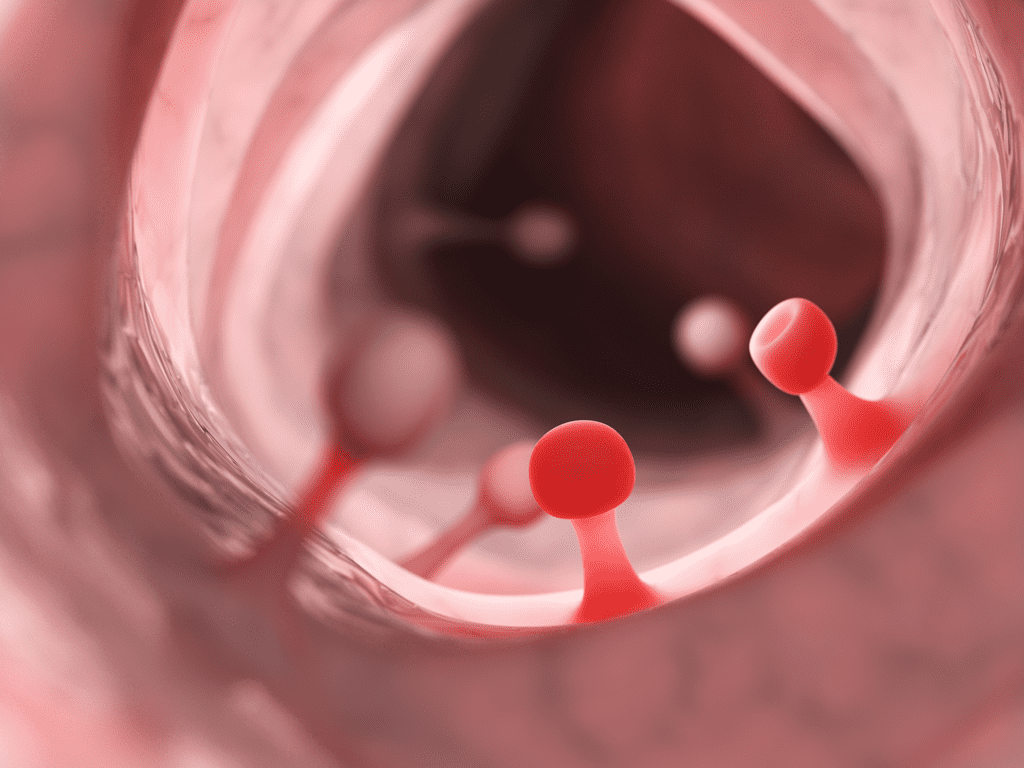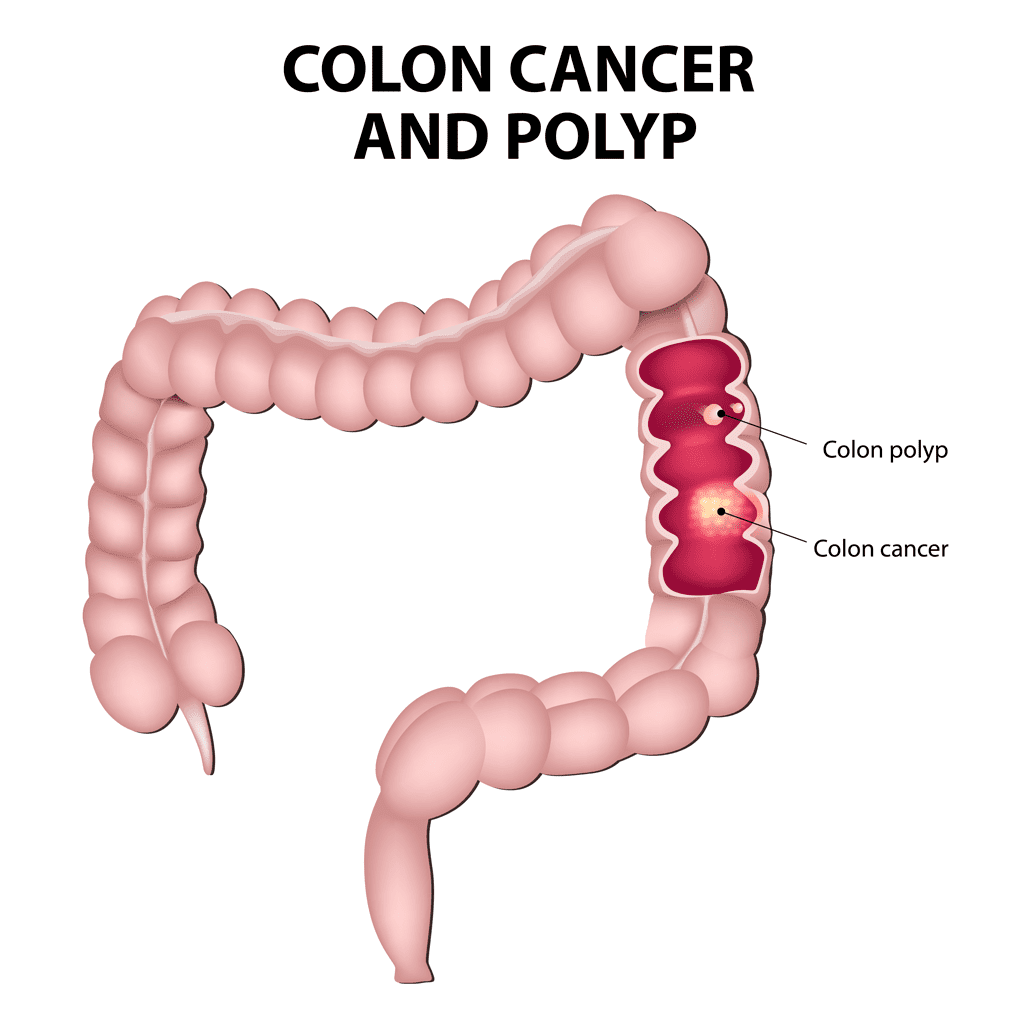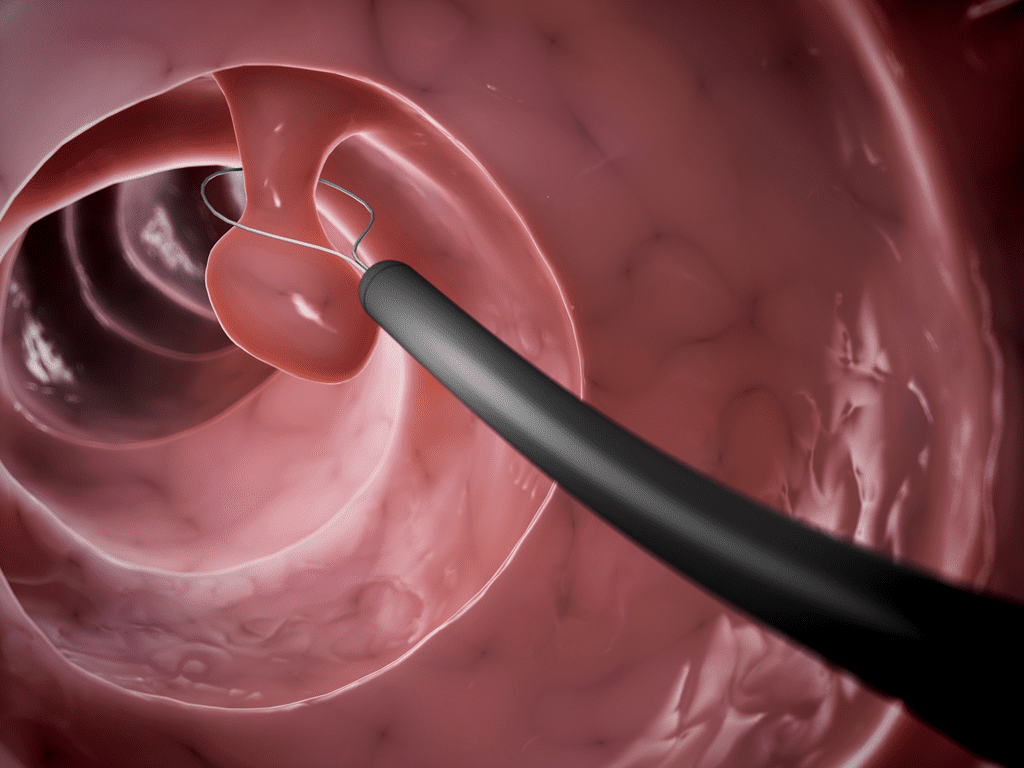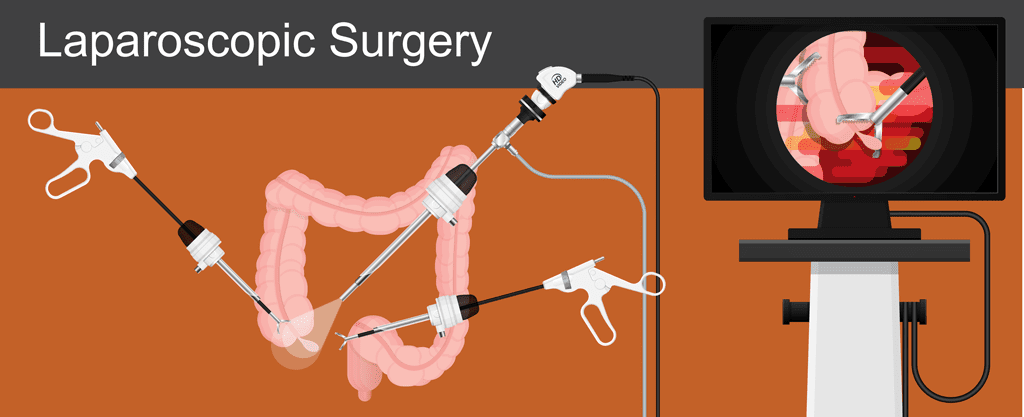
What are Colorectal Polyps?
Colorectal polyps are small growths found along the lining of the colon. These clumps of cells are usually the result of genetic changes in the cells lining our gut and most are harmless. However, some polyps may be precursors to colon cancer. Therefore, one of the best ways to prevent colon cancer is by removing these polyps.
In Singapore, colorectal cancer is the most common cancer in men and 2nd most common in women, next to breast cancer. Fortunately, it is also highly preventable through the detection and removal of these polyps. If you are above the age of 50 or have risk factors for colorectal cancer, please speak to your gastroenterologist about colorectal screening.
What types of Colorectal Polyps are cancerous?

Colorectal polyps can be typified into 3 categories:
- Hyperplastic polyps — these polyps are fairly common, small and have a low risk of turning cancerous. That being said, they are still removed and tested.
- Adenomatous polyps — these polyps are the most common and have a risk of turning cancerous. Generally, the larger the adenomatous polyps, the more likely it is to develop into cancer.
- Hamartomatous polyps — these polyps are usually caused by certain syndromes like Peutz-Jaghers syndrome. These polyps should be removed as they can develop into cancer.
There are also pseudopolyps. As the name suggests, these polyps present as a result of chronic inflammation in the colon of people with Crohn’s disease and ulcerative colitis. These do not become cancerous.
Symptoms of Colorectal Polyps
Generally, colorectal polyps do not present any symptoms and are usually discovered by your gastroenterologist when a colonoscopy is performed. However, some symptoms you may experience are:
- Rectal bleeding or blood in the stool
- A change in bowel habits that last longer than a week
- Cramping abdominal pain
- Iron deficiency anaemia
If you experience any of these symptoms, please schedule a consultation with your doctor.
What causes Colorectal Polyps?
The exact cause of colorectal polyps has not been defined. Uncontrolled cell growth can cause polyps to form and develop anywhere within the large intestine. However, some risk factors include:
Lifestyle
- A diet high in fat and red meat
- A diet low in fibre
- Cigarette smoking
- Obesity
Ageing
Majority of polyps and colorectal cancers occur in people above the age of 50, which is why routine colonoscopy screenings are recommended once one hits their 50s.
Genetic predisposition
A family history of colon polyps or colon cancer may put you at higher risk of developing the same condition. If a family member suffers from colon polyps or colorectal cancer, please discuss this with your doctor.
How are Colorectal Polyps diagnosed?
The mainstay method of detecting polyps would be via a colonoscopy.
This procedure involves the insertion of a long, flexible tube with a light and camera at the end through the anus and is guided upwards into the rectum and colon. This allows the gastroenterologist to visualise the lining of the colon and detect any polyps, as well as masses, tumours or bleeding. The attachment of specialised tools to the endoscope also allows the gastroenterologist to remove colorectal polyps during the colonoscopy.
Other alternative diagnostic tests include:
- Sigmoidoscopy — A diagnostic test used to examine the left side of the colon.
- Barium enema — Also known as a double-contrast barium enema, this test uses an X-ray and the metallic compound, barium, to outline the colon and rectum. It helps detect polyps and other structural abnormalities in the colon.
- CT colonography — Also known as a virtual colonoscopy, this test uses low-dose radiation and CT scan to examine the colon.
- Stool test — A stool immunochemical test examines stool for traces of blood that may indicate colon cancer or precancerous conditions.
In Singapore, as part of the National Health Screening programme, Singaporeans aged 50 and above are eligible for a free Faecal Immunochemical Test (FIT). However, these tests are not as sensitive to detecting precancerous polyps as colonoscopy.
Dr Benjamin Yip advises that whilst stool tests and colonoscopies are proven to be equally good at colorectal cancer prevention, there are pros and cons to each test.
Stool tests are recommended yearly, while a colonoscopy carries small risks. If you are uncertain, please speak to your Gastroenterologist who will advise you further regarding each option.
How are Colorectal Polyps treated?

The removal of polyps is called a polypectomy and can be done during the colonoscopy. It involves the use of forceps or a wire loop attached to the end of the colonoscope. Smaller polyps can be snipped off while larger polyps are removed using the wire loop and burning them off via electrocautery.
The extracted polyp is then sent for further examination by a pathologist. These results are sent to your doctor.
What happens if a doctor removes a large colon polyp and it contains cancer?

If colorectal cancer is detected, your doctor will work with you in creating a treatment plan that best suits your condition. This is dependent on numerous factors, such as the stage of cancer and its location.
If the cancer has not spread your doctor may suggest a colectomy that can be done laparoscopically or via open surgery.
Laparoscopic colectomy is a minimally invasive surgical technique. Compared to an open surgery, a laparoscopic colectomy involves several small incisions and the use of specialised miniature surgical tools. This, in turn, allows for a shorter recovery time compared to a traditional colectomy.
Do I need a follow-up even after my colorectal polyps are removed?
Yes, after your polypectomy, follow-ups with your gastroenterologist are important because your chances of developing new polyps are higher. After your first colonoscopy, a follow-up colonoscopy will be recommended some years after. The frequency in which the follow-up colonoscopies are held is dependent on the number, the size, the histology (pathologist report on the polyp) and other factors.
Summary

Colorectal polyps usually do not cause any symptoms and are often discovered during routine colonoscopy screenings. Screenings play a key role in removing these polyps before they become cancerous, or in detecting cancer in its early stages for better outcomes.
If you are above the age of 50, have risk factors for colorectal cancer, or experience symptoms indicative of colorectal cancer, please consult a gastroenterologist.
References
- “Colon polyps - Diagnosis and treatment.” Mayo Clinic, 20 July 2021, https://www.mayoclinic.org/diseases-conditions/colon-polyps/diagnosis-treatment/drc-20352881. Accessed 9 June 2022.
- “Colon Polyps Types and Symptoms.” Verywell Health, 25 June 2021, https://www.verywellhealth.com/types-of-colon-polyps-and-their-symptoms-1942567. Accessed 9 June 2022.
- “CT Colonography.” SingHealth, https://www.singhealth.com.sg/patient-care/conditions-treatments/ct-colonography. Accessed 9 June 2022.
- Doubeni, Chyke. “Patient education: Colon polyps (Beyond the Basics).” UpToDate, 17 March 2022, https://www.uptodate.com/contents/colon-polyps-beyond-the-basics. Accessed 9 June 2022.
- Sethi, Saurabh. “Removed polyp is cancerous: What happens next and more.” Medical News Today, 28 April 2021, https://www.medicalnewstoday.com/articles/what-if-a-polyp-that-is-removed-contains-cancer. Accessed 9 June 2022.

